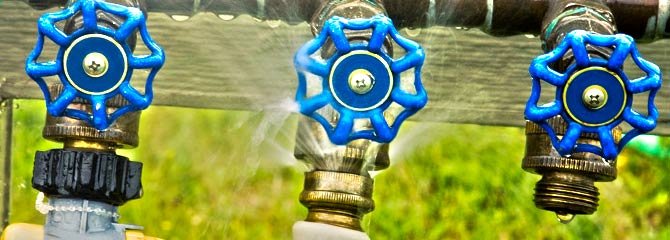Water leak detection is essential to enable plumbers to repair leaks as soon as they are suspected. There are a number of different ways to detect water leaks, which have evolved over the centuries. Some of these methods are used for residential plumbing repairs, while others are used mainly in large-scale applications such as commercial and industrial installations. Methods currently used to detect leaks include:
- Monitoring of water pressure and flow data
- Conducting closed-circuit camera inspections of the interior of water pipes
- Infrared thermal imaging
- Acoustic signal detection
Ancient Roman Water Systems
The earliest documented incidences of water leak detection date back to ancient Rome. The Romans had a sophisticated water system made up of 13 aqueducts that carried water throughout the city. Leaks were a problem even then, and the Roman Water Commissioner at the end of the first century highlighted the problem in a two-page report “De aquaeductu” given to the emperor at the time. The commissioner Sextus Julius Frontenus listed the problem of aqueducts that had begun leaking because of their age, and because they were continually being tapped by water thieves, which was a major crime in the city of Rome
Visual Leak Inspections
Throughout the centuries, the only way to detect water leaks was by conducting regular visual inspections. Workmen had no difficulty identifying burst water pipes, but tiny, pin-point leaks were more difficult to locate until they were big enough to be obvious. Often, it was necessary to dig up large sections of a residential property simply to find the source of a leak, which caused great expense in plumbing repairs for the homeowner.
Infrared Thermal Imaging
In 1800 William Herschel invented infrared thermal imaging, which was used originally for military purposes only. However, during the 1950s and 1960s engineers realized the opportunity to use the infrared for other purposes, and water leak detection was one of them. The technology identifies differences in temperature, such as those caused by the presence of water in a section of a wall or roof.
The invention of digital technology enabled the taking of photos of a section of a building and the use of infrared to identify isothermic images on the photographs, and on-site, trenchless water leak detection was born.
Camera Inspections
With the invention of film and digital technology, it became possible to use closed-circuit cameras to inspect and record the condition of the interior of water pipes. The images are displayed on a monitor and cracks and leaks can be identified without the need to excavate. Plumbers use camera inspections routinely during maintenance work to determine whether water pipes are in need of attention. When leaks are discovered, we can often repair the problem without digging up the area by using various trenchless methods.
Acoustic Water Leak Detection
Another popular method of detecting water leaks is by using acoustic devices. This method was first discovered in 1879 when Professor A. M. Mayer invented the “topophone.” This was a device that enabled the person wearing it to identify the source of any sound. The principle behind these devices was adapted to a range of different purposes over the years. This method is now much more advanced and is used to identify the sound of escaping water as it moves through cracks and holes in the pipes.
It’s necessary to record a baseline acoustic fingerprint before any damage occurs, however, in order to have data against which to compare. This requirement makes it more viable for commercial plumbing applications than residential ones.
Water leak detection is one of the most important services offered by local plumbers, and it enables Toronto homeowners to save thousands of dollars each year by discovering leaks early and repairing them using modern technology.

